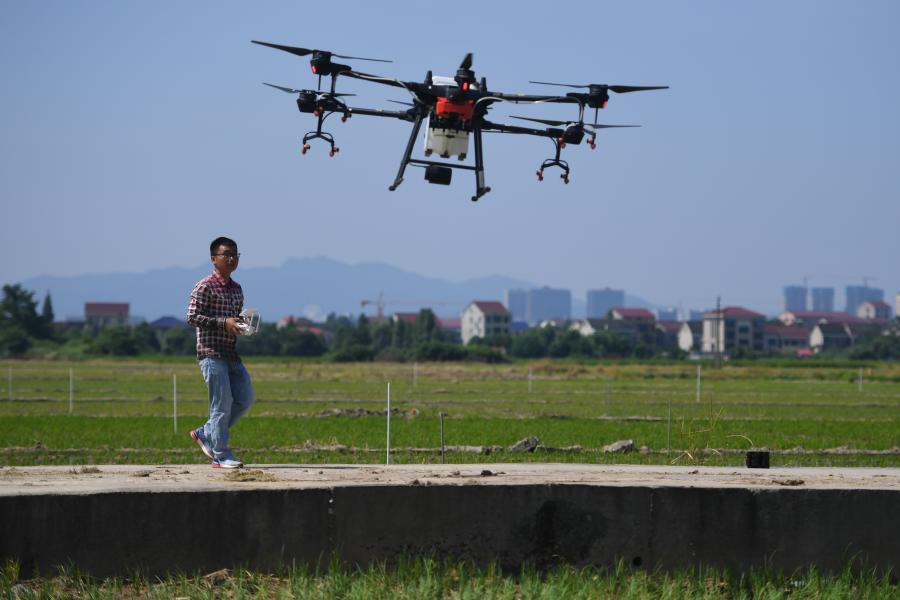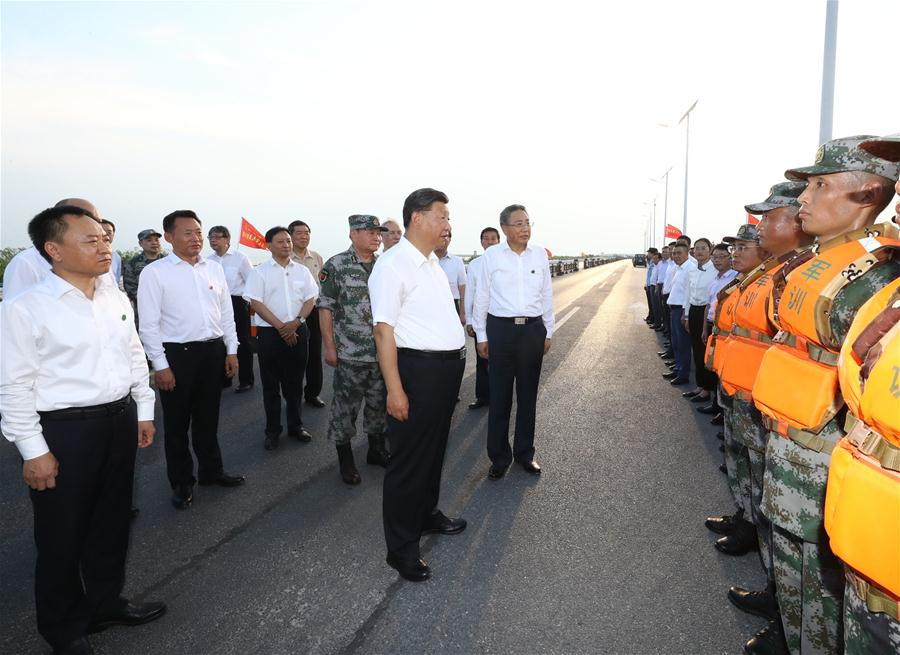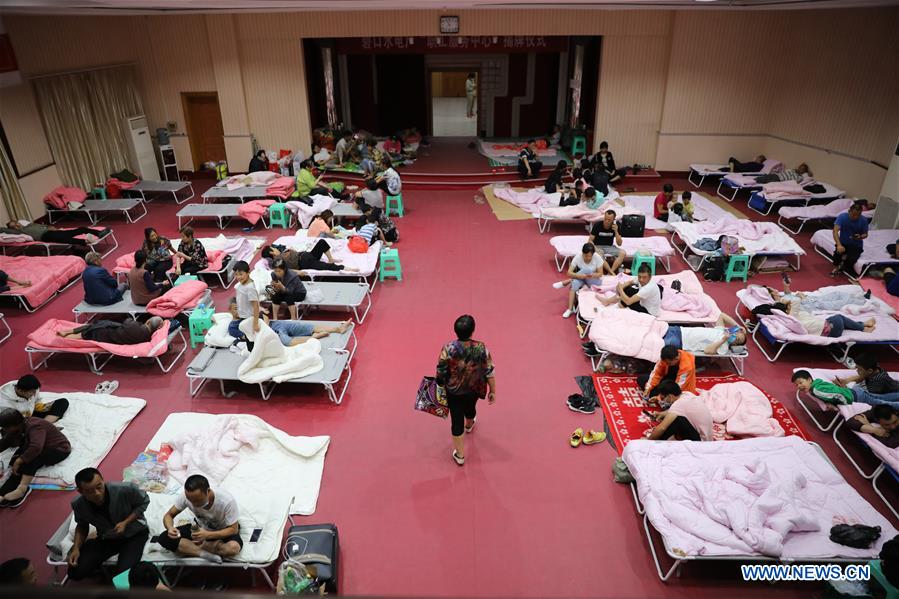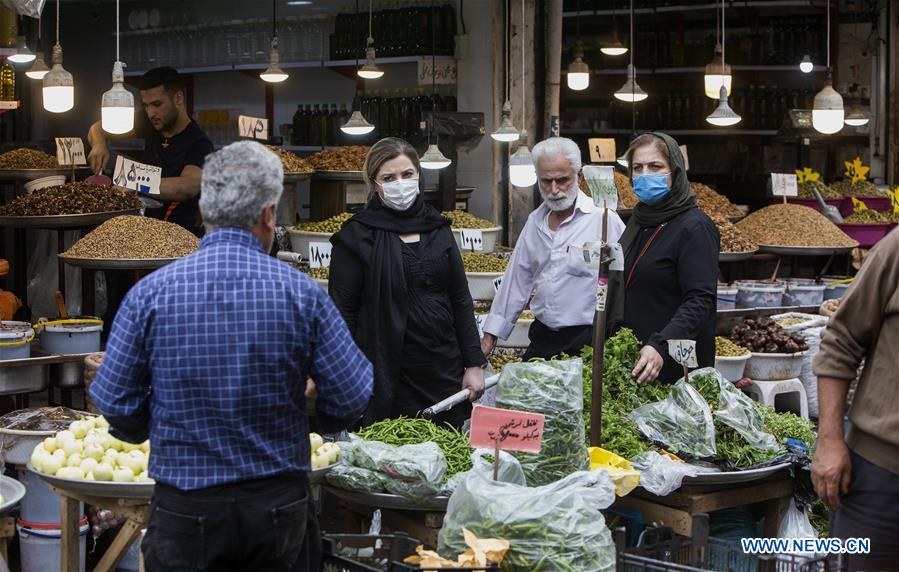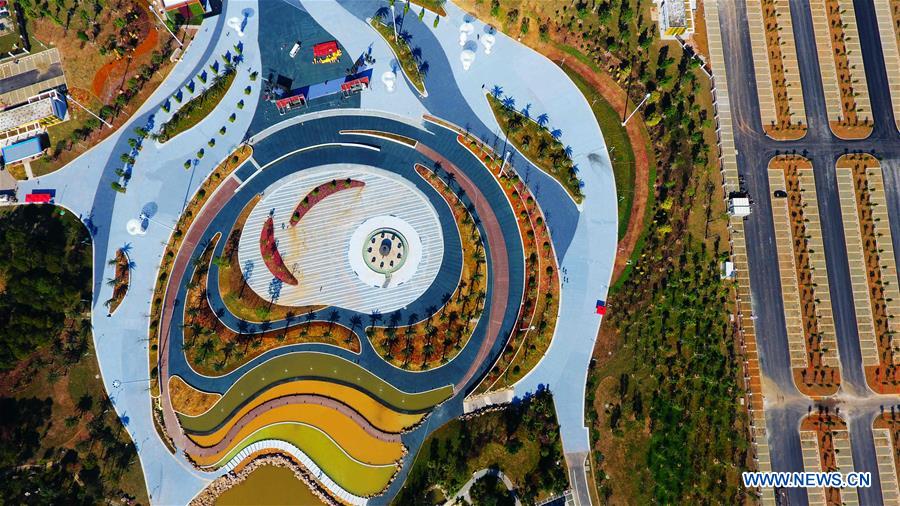-- Rain-triggered floods have affected tens of millions in dozens of provincial-level regions in China, and destroyed vast stretches of farmland and agricultural facilities.
-- In the face of the floods, Chinese authorities have been mobilizing resources, using upgraded technology, and providing material support to ensure grain security and make up for losses in production.
-- China's summer grain output has reached a historic high in 2020. The increasing plantation area of autumn grain and the well growing crops have laid a solid foundation for another bumper harvest.
BEIJING, Aug. 19 -- Since mid-July, Huang Xiaoping has been busy working in his 110-hectare paddy field, harvesting early rice and sowing for the next season.
Huang also runs a rental business involving farm machinery in a village near the Dongting Lake, China's second-largest freshwater lake in the central Hunan Province, helping local farmers during the "double rush" season.
"We need to fight the current flood and strengthen the embankments," Huang said.
According to China's Ministry of Emergency Management, rain-triggered floods had affected some 54.8 million people in 27 provincial-level regions as of late July, causing direct economic losses of 144.43 billion yuan (about 20.8 billion U.S. dollars).
Restrictions on food exports and panic hoarding in some countries and regions, as well as rampant desert locust, have adversely affected food production.
"The State of Food Security and Nutrition in the World 2020" report released by five agencies, including the Food and Agriculture Organization of the United Nations, projected that COVID-19 could push up to 132 million people into starvation globally this year.
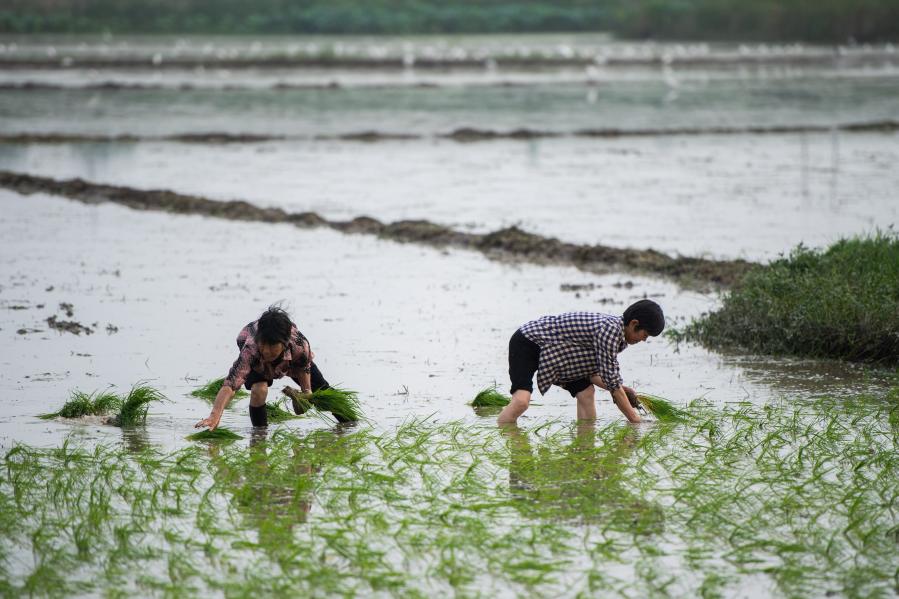
Villagers transplant rice seedlings in Gaitian Village in Lixian County, central China's Hunan Province, July 20, 2020. (Xinhua/Chen Sihan)
Though downpours and floods destroyed vast stretches of farmland and agricultural facilities, flood control situation in the hard-hit provinces of Jiangxi and Anhui is improving as the water level in major waterways continues to recede.
The flood control and drought relief headquarters of the two provinces have successively downgraded their emergency response level since early August.
In the face of the floods, the Chinese provinces have been mobilizing resources, using upgraded technology, and providing material support to ensure grain security and make up for losses in production.
For farmers like Huang, time is the essence. In the low-lying township of Liaonan near the Poyang Lake in Jiangxi, Wu Baolin was busy sowing seeds of late rice with two workers. He saw some two hectares of his crops damaged in the floods.
"The harvest is finally guaranteed even if it might be delayed," Wu said, adding that there is no time to lose when it comes to growing crops.
In Anhui, replantation of single-cropping rice has been carried out on every piece of farmland where the floodwater has receded. As of early August, more than 100,000 hectares of crops had been resowed, accounting for 38 percent of Anhui's total area of farmland needing replantation, according to the provincial department of agriculture and rural affairs.

